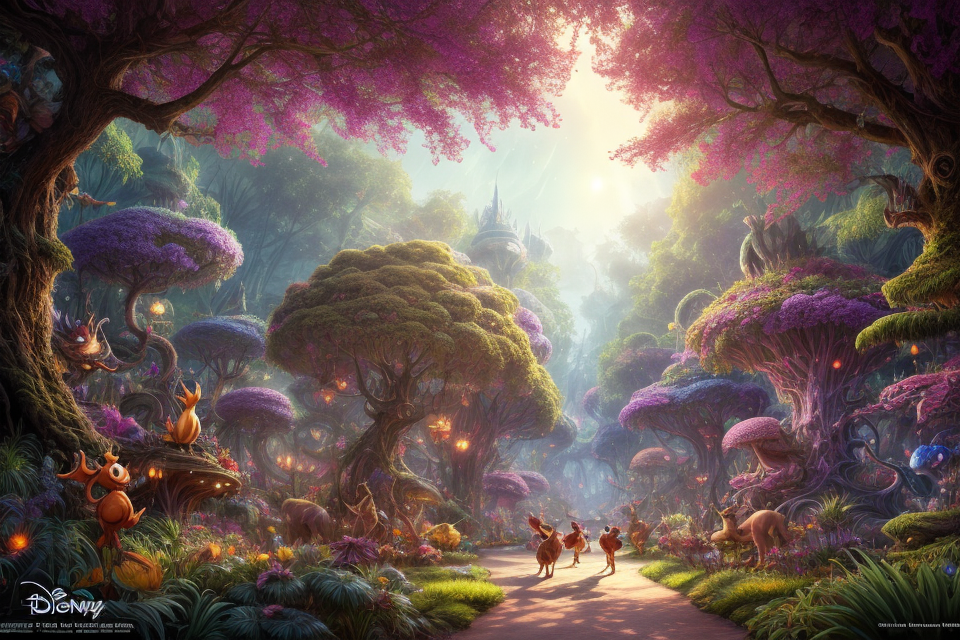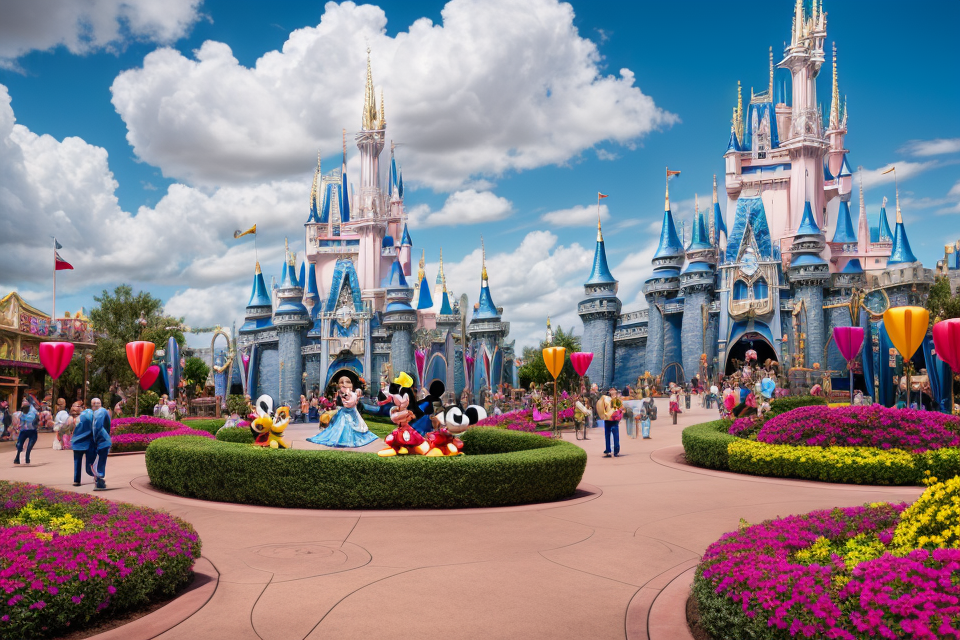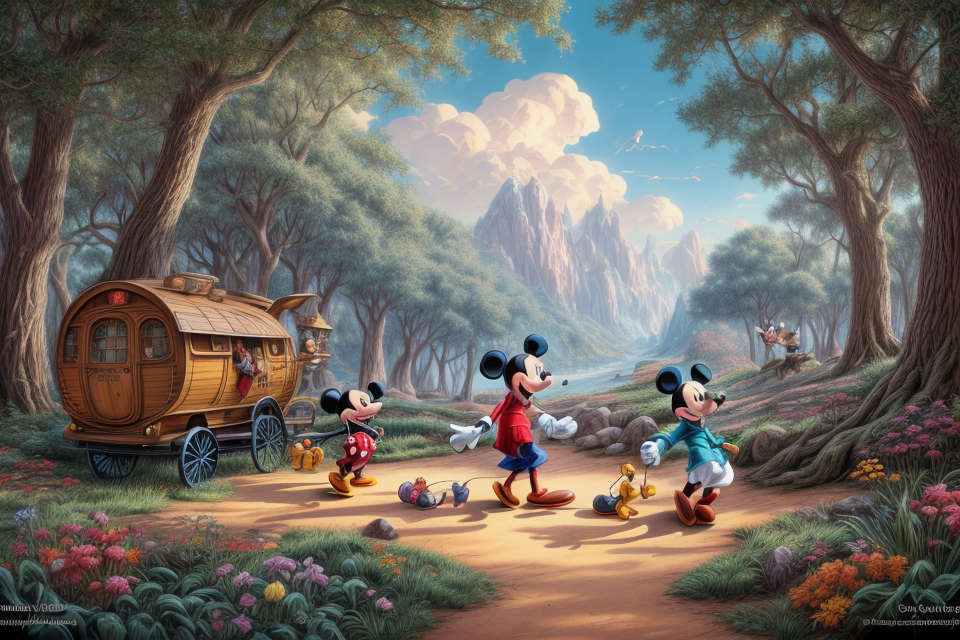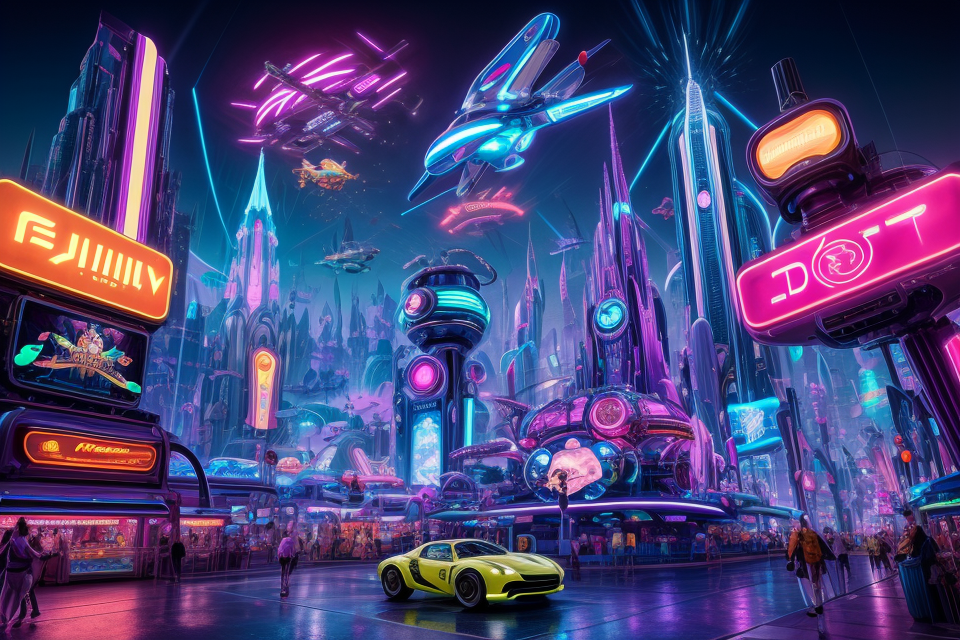
Are you ready to unleash your inner creativity and bring your wildest ideas to life? Look no further than the Disney ideation method. This innovative approach to idea generation has been used by Disney’s imagineers for decades to create some of the most beloved and iconic attractions in the world. From the Haunted Mansion to Space Mountain, the Disney ideation method has been instrumental in bringing these and other beloved experiences to life.
In this guide, we’ll explore the ins and outs of the Disney ideation method, from its origins to its key principles and techniques. Whether you’re a seasoned creative professional or just starting out, this comprehensive guide will give you the tools you need to unlock your own creative magic and bring your ideas to life. So grab your pen and paper, and let’s dive in!
Understanding the Disney Ideation Method
Origins and History
Brief history of Walt Disney and the company
Walt Disney, born on December 5, 1901, in Chicago, Illinois, was an American entrepreneur, animator, and voice actor. He founded Walt Disney Productions, now known as The Walt Disney Company, in 1923, with his brother Roy O. Disney. Disney’s first animated film, “Alice’s Wonderland,” was released in 1924, and it featured a live-action character interacting with animated scenes. Disney’s early films, such as “Snow White and the Seven Dwarfs” (1937) and “Pinocchio” (1940), showcased his innovative techniques and passion for storytelling.
Evolution of Disney’s creative process
Throughout its history, Disney has undergone several changes in its creative process. In the early years, Disney focused on creating animated films with simple stories and characters. As technology advanced, Disney began experimenting with live-action films, theme parks, and television shows. The company’s approach to storytelling also evolved, with a greater emphasis on character development, emotional resonance, and cultural significance. Disney’s commitment to innovation and experimentation has remained a constant throughout its history, contributing to its enduring success and influence.
The role of the Disney ideation method in modern filmmaking
The Disney ideation method has played a significant role in modern filmmaking, particularly within the Disney company. This creative process emphasizes collaboration, imagination, and storytelling, and it has been instrumental in the development of numerous successful films, including “The Lion King” (1994), “Beauty and the Beast” (1991), and “Frozen” (2013). The Disney ideation method has also influenced other animation studios and filmmakers, who have adopted various aspects of the process to enhance their own creative endeavors. By integrating the best elements of the Disney ideation method, filmmakers can create captivating stories that resonate with audiences and stand the test of time.
Key Principles and Techniques
Brainstorming and Storyboarding
Brainstorming and storyboarding are two key techniques used in the Disney ideation method. Brainstorming involves generating a large number of ideas in a short amount of time, while storyboarding involves creating a visual representation of a concept or idea.
At Disney, brainstorming sessions are often held with a large group of people, encouraging diverse perspectives and creative thinking. The goal is to generate as many ideas as possible, without judgment or criticism. These ideas are then organized and refined through a process of elimination and further development.
Storyboarding, on the other hand, is a way to visually represent an idea or concept. This technique is often used in the early stages of filmmaking, animation, and theme park design. By creating a storyboard, Disney artists and designers can see how an idea will look and function in a physical space, allowing them to make adjustments and improvements before construction begins.
The Use of Imagination and Visualization
Imagination and visualization are crucial components of the Disney ideation method. Disney encourages its employees to use their imaginations to come up with new and innovative ideas, rather than simply copying what has been done before.
Disney also encourages its employees to visualize their ideas, to see them in their minds before they become a reality. This technique is often used in the design of theme park attractions, where imagineers will create detailed models and renderings to help visualize the final product.
By using imagination and visualization, Disney is able to create unique and immersive experiences that captivate audiences and transport them to new worlds.
The Importance of Collaboration and Feedback
Collaboration and feedback are essential elements of the Disney ideation method. Disney encourages its employees to work together and share their ideas, fostering a collaborative and supportive environment.
Feedback is also a crucial part of the process, as it helps to refine and improve ideas. At Disney, feedback is given freely and constructively, with the goal of making the final product as strong as possible.
Through collaboration and feedback, Disney is able to create ideas that are more robust and effective, and that ultimately lead to better results.
Embracing Failure and Perseverance
Finally, the Disney ideation method emphasizes the importance of embracing failure and perseverance. Disney understands that not every idea will be successful, but that failure is an opportunity to learn and grow.
By embracing failure and persevering through challenges, Disney is able to continue innovating and pushing the boundaries of what is possible. This mindset has led to many of the company’s most successful projects, and continues to drive its creative endeavors today.
Steps in the Disney Ideation Method
- Research and inspiration
- This stage involves gathering information and researching different topics that can be used as inspiration for the creative process. This includes researching history, culture, and different subjects to create a rich and diverse foundation for the story.
- Concept development and storyboarding
- In this stage, the research gathered in the previous stage is used to develop a concept for the story. This involves creating a storyboard, which is a visual representation of the story’s plot and characters. The storyboard helps the team visualize the story and make changes before moving forward with the production process.
- Refining the idea and getting feedback
- Once the concept and storyboard are developed, the team will refine the idea and get feedback from other members of the creative team. This feedback helps to ensure that the story is coherent, engaging, and resonates with the target audience.
- Visual development and character design
- This stage involves creating visual elements for the story, such as backgrounds, environments, and characters. The character design process includes creating the visual appearance of the characters, as well as their personalities and motivations.
- Scriptwriting and story structure
- The scriptwriting stage involves writing the dialogue and narrative for the story. The story structure is also developed at this stage, ensuring that the story has a clear beginning, middle, and end, and that the plot points are well-paced and engaging.
- Finalizing the idea and pitching it to stakeholders
- The final stage involves finalizing the idea and preparing a pitch to stakeholders. This pitch includes a summary of the story, visuals, and a demo reel to showcase the project’s potential. The pitch is used to secure funding and support for the project, and to get approval to move forward with production.
Applying the Disney Ideation Method
Individuals and Teams
When it comes to applying the Disney Ideation Method, there are different techniques that can be used by individuals and teams, depending on their size and goals. Here are some tips for solo creators and small groups, as well as larger teams and collaborations.
Tips for Solo Creators and Small Groups
For solo creators and small groups, the Disney Ideation Method can be used to generate ideas for projects or campaigns. Here are some tips for getting the most out of this method:
Brainstorming Session
One of the key elements of the Disney Ideation Method is the brainstorming session. This involves gathering a group of people and encouraging them to come up with as many ideas as possible within a set amount of time. For solo creators or small groups, this can be done in a few different ways:
- Alone: Solo creators can use the brainstorming session to generate ideas for their own projects. This can be done by setting aside a specific amount of time each day or week to brainstorm ideas, and then recording them in a notebook or on a computer.
- With a small group: Small groups can use the brainstorming session to generate ideas for a project or campaign. This can be done by setting aside a specific amount of time to brainstorm, and then recording the ideas in a shared document or on a whiteboard.
Divergent Thinking
Another key element of the Disney Ideation Method is divergent thinking. This involves encouraging participants to come up with as many ideas as possible, without worrying about whether they are good or bad. For solo creators or small groups, this can be done by setting aside a specific amount of time to brainstorm, and then encouraging participants to come up with as many ideas as possible within that time frame.
Reverse Brainstorming
Reverse brainstorming is another technique that can be used by solo creators or small groups. This involves starting with a specific problem or challenge, and then brainstorming ideas for how to solve it. For example, if a small group is trying to come up with ideas for a new product, they could start by brainstorming ideas for what the product should do, rather than what it should look like.
Techniques for Larger Teams and Collaborations
For larger teams and collaborations, the Disney Ideation Method can be used to generate ideas for projects or campaigns on a larger scale. Here are some techniques that can be used:
Idea Mapping
Idea mapping is a technique that can be used by larger teams to generate ideas for a project or campaign. This involves creating a visual map of ideas, with each idea represented by a node on the map. Participants can then add nodes to the map, connecting them to other ideas and building on them.
Role-Playing
Role-playing is another technique that can be used by larger teams to generate ideas for a project or campaign. This involves assigning participants specific roles or personas, and then encouraging them to come up with ideas from the perspective of those roles or personas. For example, if a team is working on a new product, they could assign each participant a specific role, such as a customer or a competitor, and then brainstorm ideas from that perspective.
Balancing Creativity and Efficiency
Regardless of the size of the team or the project, it’s important to balance creativity and efficiency when using the Disney Ideation Method. This means encouraging participants to come up with as many ideas as possible, while also setting clear goals and deadlines for the project.
One way to balance creativity and efficiency is to use a combination of different techniques, such as brainstorming, divergent thinking, and reverse brainstorming. This can help
Industries and Disciplines
The Disney ideation method is not limited to animation, film, and television. It can be adapted for use in other creative industries such as game design, architecture, and product development. The following are some examples of how the method can be applied in these industries:
Game Design
The Disney ideation method can be used to create immersive and engaging game worlds. The storyboarding process can be used to plan out the game’s narrative, while the character and environment design processes can be used to create the game’s visuals. The iterative process of refining and improving the game’s design can be facilitated by using the Disney ideation method.
Architecture
The Disney ideation method can be used to design buildings and spaces that are both functional and aesthetically pleasing. The storyboarding process can be used to plan out the layout of a building, while the character and environment design processes can be used to create the building’s visuals. The iterative process of refining and improving the building’s design can be facilitated by using the Disney ideation method.
Product Development
The Disney ideation method can be used to design products that are both functional and aesthetically pleasing. The storyboarding process can be used to plan out the product’s design, while the character and environment design processes can be used to create the product’s visuals. The iterative process of refining and improving the product’s design can be facilitated by using the Disney ideation method.
In conclusion, the Disney ideation method can be applied to a wide range of industries and disciplines. Its use can help facilitate the creative process and lead to innovative and engaging designs.
Overcoming Challenges and Barriers
Common obstacles faced when implementing the Disney ideation method
- Resistance to change: Organizations may be resistant to adopting a new ideation method, particularly if they have established processes in place.
- Limited resources: Some organizations may lack the time, budget, or personnel to fully commit to the Disney ideation method.
- Lack of understanding: The Disney ideation method may be difficult to grasp for individuals unfamiliar with the creative process and its associated techniques.
Strategies for overcoming these challenges
- Build a strong business case: To overcome resistance to change, it’s essential to demonstrate the benefits of the Disney ideation method, such as increased creativity, innovation, and customer satisfaction.
- Prioritize and allocate resources: To address limited resources, organizations should prioritize the implementation of the Disney ideation method and allocate necessary resources to ensure its success.
- Provide training and support: To help individuals understand the Disney ideation method, organizations should provide training and support, such as workshops, seminars, and access to resources like books, articles, and online tutorials.
Balancing the creative process with practical considerations
The Disney ideation method is designed to be a highly creative process, but it’s also important to consider practical considerations such as budget, timeline, and resource constraints. Organizations can strike a balance by incorporating the ideation process into their existing workflows and using tools like project management software to keep track of progress and deadlines. Additionally, it’s important to establish clear goals and objectives for the ideation process to ensure that it remains focused and productive.
FAQs
1. What is the Disney ideation method?
The Disney ideation method, also known as the Disney Imagineering process, is a creative problem-solving technique developed by Walt Disney and his team of Imagineers. It is a step-by-step process that encourages brainstorming, idea development, and innovation to create new and innovative ideas for Disney’s theme parks, movies, and other entertainment products.
2. What are the steps of the Disney ideation method?
The Disney ideation method consists of six steps:
1. Dreaming: This is the initial stage where you allow yourself to dream freely and imagine the impossible. The goal is to come up with wild and innovative ideas that can spark creativity.
2. Doodling: In this stage, you start to develop your ideas further by sketching, drawing, and doodling. This helps to visualize your ideas and bring them to life.
3. Developing: You start to refine your ideas and think about how they can be turned into reality. This stage involves brainstorming, research, and testing to ensure that your ideas are feasible.
4. Delegating: Once you have developed your ideas, you need to delegate tasks to the appropriate teams to ensure that they are executed properly.
5. Deciding: In this stage, you evaluate your ideas and make decisions on which ones to pursue further.
6. Delivering: This is the final stage where you deliver your ideas to the audience and evaluate their response.
3. How does the Disney ideation method differ from other brainstorming techniques?
The Disney ideation method differs from other brainstorming techniques in that it encourages imaginative thinking and the development of innovative ideas. While other techniques may focus on logical and practical solutions, the Disney ideation method emphasizes creativity and the ability to think outside the box. Additionally, the Disney ideation method is a structured process that involves multiple stages, whereas other techniques may be more spontaneous and free-form.
4. Can the Disney ideation method be used in other industries besides entertainment?
Yes, the Disney ideation method can be used in any industry that requires creative problem-solving. The process is designed to encourage innovation and the development of new ideas, which can be useful in fields such as technology, design, and marketing. The key is to adapt the process to fit the specific needs of your industry and project.
5. Are there any drawbacks to using the Disney ideation method?
One potential drawback to using the Disney ideation method is that it can be time-consuming and require a significant investment of resources. Additionally, the process may not be suitable for all types of projects, particularly those that require more straightforward or practical solutions. It is important to carefully evaluate the pros and cons of using the Disney ideation method before deciding to implement it in your organization.


